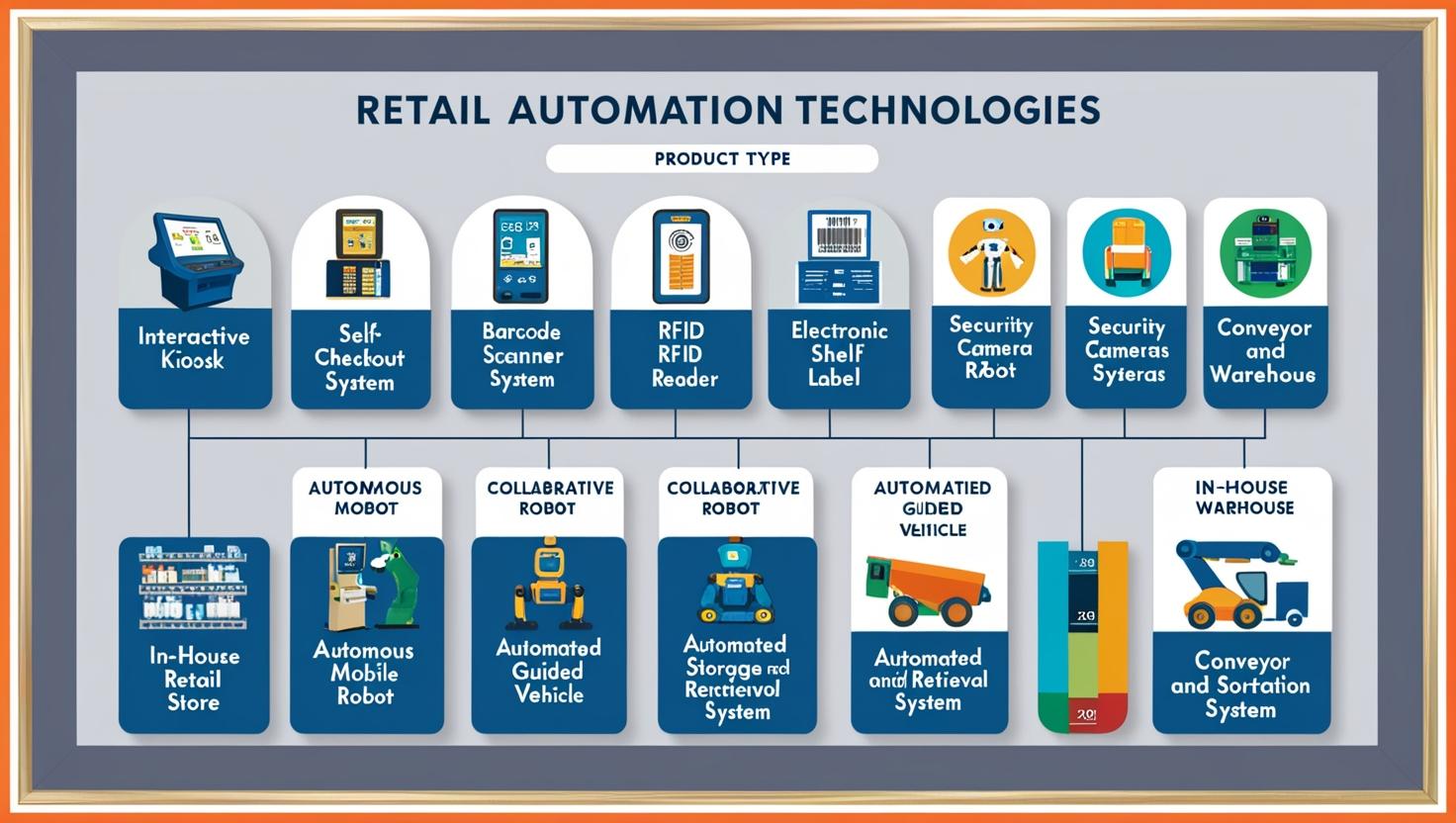The retail landscape is undergoing a dramatic transformation fueled by automation technologies. From smart checkout systems and inventory robots to AI-driven personalized marketing, the Retail Automation Market is rapidly evolving, promising to redefine how retailers operate and how customers experience shopping. As retailers strive to improve efficiency, reduce costs, and enhance customer engagement, automation is becoming a vital strategic investment.
How Retail Automation Is Revolutionizing the Shopping Landscape?
Retail automation is transforming the shopping experience by streamlining operations, speeding up checkout, and enabling personalized services through AI, robotics, and IoT. This revolution is helping retailers boost efficiency, reduce costs, and deliver faster, more convenient, and engaging customer journeys.
Let’s explore the key trends shaping this market, leading regions, major players, implementation challenges, and its overall impact on the customer experience.
Retail automation Market Growth
The retail automation industry is expected to be valued at USD 27.6 billion in 2024 and is projected to reach USD 44.3 billion by 2029; it is expected to grow at a CAGR of 9.9%
Key Trends Shaping the Retail Automation Market
One of the most significant trends driving retail automation is the integration of Artificial Intelligence (AI) and Machine Learning (ML) to personalize shopping and optimize inventory management. AI-powered chatbots and virtual assistants are enhancing customer interaction by providing instant support and recommendations.
Another critical trend is the adoption of robotics and autonomous systems for tasks such as shelf scanning, restocking, and warehouse management. These robots increase accuracy and speed, reducing human error and operational costs.
Self-checkout systems and contactless payment solutions have gained momentum, especially post-pandemic, offering customers quicker and safer transaction options. Additionally, Internet of Things (IoT) devices enable real-time data collection, improving supply chain transparency and demand forecasting.
Key Regions Driving Market Growth
The Asia-Pacific region leads the growth of retail automation due to rapid urbanization, increasing smartphone penetration, and a growing middle class demanding seamless shopping experiences. Countries like China, Japan, and South Korea are at the forefront, investing heavily in retail tech.
North America follows closely, with the United States and Canada investing in innovative retail solutions to stay competitive. Europe is also adopting automation technologies, driven by customer demand for faster service and digital transformation initiatives.
Emerging markets in Latin America and the Middle East are gradually embracing automation, presenting significant growth opportunities for vendors and retailers alike.
Download PDF Brochure @ https://www.marketsandmarkets.com/pdfdownloadNew.asp?id=1247

Leading Companies in the Retail Automation Space
Several companies are spearheading innovation in retail automation. Industry leaders like Amazon Robotics have revolutionized warehouse automation, while NCR Corporation and Square dominate the self-checkout and payment solutions segment.
- Honeywell International Inc. (US),
- NCR VOYIX Corporation. (US),
- Diebold Nixdorf, Incorporated. (US),
- Zebra Technologies Corp. (US),
- Hangzhou Hikvision Digital Technology Co., Ltd. (China),
Other notable players include Zebra Technologies, known for its IoT and barcode scanning solutions, which leverages robotics for automated grocery fulfillment.
These companies continuously invest in R&D to develop scalable and cost-effective solutions tailored for different retail formats.
Challenges in Implementing Retail Automation
Despite the promising benefits, retail automation faces hurdles in adoption. The high upfront investment for sophisticated robotic systems and AI software can be a barrier, especially for small and medium-sized retailers.
Integration with existing legacy systems poses technical challenges, often requiring significant customization and training. Additionally, data privacy and cybersecurity concerns arise as retailers collect vast amounts of customer data through IoT and AI systems.
Workforce adaptation is another factor. Retail staff must be reskilled to work alongside automated systems, and concerns about job displacement remain a sensitive issue.
Impact on Customer Experience
At its core, retail automation aims to enhance the customer experience by offering faster, more personalized, and frictionless shopping journeys. Automated checkout reduces wait times, while AI-driven product recommendations create a tailored shopping environment.
Real-time inventory updates help ensure product availability, and automated customer support improves service responsiveness. Moreover, automation allows retailers to focus more on customer engagement and less on manual operational tasks.
However, retailers must balance technology with a human touch to maintain trust and connection with shoppers.
The Retail Automation Market is poised for significant growth as technology reshapes the retail sector. By embracing automation, retailers can improve operational efficiency, reduce costs, and deliver superior customer experiences. While challenges remain, ongoing innovation and strategic investments are making automation accessible across markets and retail formats.
For retailers and investors, staying ahead means understanding these key trends and adapting quickly to a future where technology and customer-centricity go hand in hand.
FAQ: Retail Automation Market
1. What is retail automation?
Retail automation refers to the use of technology—such as robotics, AI, IoT, and self-checkout systems—to automate retail operations, improve efficiency, and enhance the customer shopping experience.
2. What are the key trends driving the retail automation market?
Key trends include AI-powered personalization, robotics for inventory and warehouse management, self-checkout and contactless payments, and IoT for real-time data and supply chain optimization.
3. Which regions are leading the adoption of retail automation?
The Asia-Pacific region leads due to rapid urbanization and tech adoption, followed by North America and Europe. Emerging markets in Latin America and the Middle East are also growing in automation adoption.
4. Who are the major players in the retail automation industry?
Leading companies include Amazon Robotics, NCR Corporation, Square, Zebra Technologies, and Ocado Technology, among others.
5. What are the main challenges in implementing retail automation?
Challenges include high upfront costs, integration with legacy systems, data privacy and cybersecurity concerns, and workforce adaptation to new technologies.
